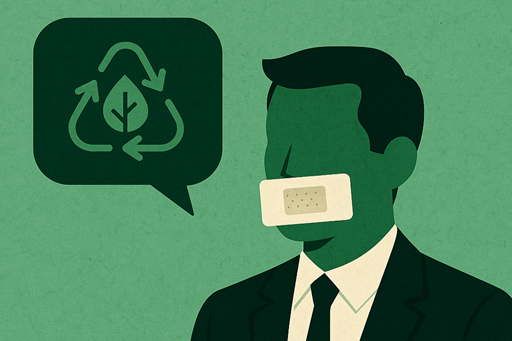Sustainability has arrived in companies – but instead of loud greenwashing, many are suddenly noticeably quiet.
After years of greenwashing debates, there’s a new trend in sustainability communication: greenhushing. Many companies invest in ecological and social initiatives – but barely speak about them publicly. Out of fear of doing something wrong. Why this silence can be just as risky as empty promises – and how to communicate sustainability credibly today.
Between Progress and Radio Silence
With the introduction of the EU Green Claims Directive and the Corporate Sustainability Reporting Directive (CSRD), sustainability has definitively evolved from a “nice-to-have” to a regulatory necessity. This also increases the pressure and expectations on companies in their external communications: Those who talk about green initiatives must expect critical questions. Are the results scientifically sound? Are there independent audits? Are social factors considered? The consequence: More and more companies are opting for a communicative retreat. This phenomenon has a name: greenhushing.
Why Greenhushing Is Dangerous
From a communications perspective, greenhushing is understandable – but risky. Because those who say nothing cannot convince. Companies miss the opportunity to make their commitment visible, build trust, and position themselves as a responsible brand. This creates three key risks: First, a reputation gap forms, because those who do good but don’t communicate it aren’t perceived as sustainable in public perception. At the same time, a competitive disadvantage emerges, as customers, investors, and applicants increasingly orient themselves toward ESG criteria and want to know what a company stands for. Finally, silence can even generate distrust rather than credibility – it’s interpreted as a lack of transparency or worse: as deliberate concealment.
Communicating Sustainability – Without Backlash
Greenhushing is often a result of communication uncertainty. The good news: You don’t have to be perfect to communicate credibly. On the contrary – those who speak openly about challenges appear more authentic than companies with a seemingly flawless sustainability story.
The outdoor equipment supplier Patagonia has practiced remarkably open communication about its own sustainability challenges for years. In their “Footprint Chronicles”, they transparently document their entire supply chain and explicitly identify problem areas – such as the high water consumption in cotton production or the CO₂ footprint of their transportation routes. Instead of concealing these weaknesses, Patagonia makes them the starting point for improvement initiatives and communicates concrete objectives.
Honesty Is the Greenest Policy
Those who take responsibility should also show responsibility. What counts is transparency rather than glossy appearance: numbers, data, and honest insights are more convincing than image films with nature panoramas. Equally important is progress instead of perfection – companies should communicate milestones, but also what hasn’t been achieved yet. Additionally, a dialogue rather than a monologue should be maintained by involving stakeholders – both internally and externally. Those who listen understand better.
Could we arouse your interest in strategy? Click here to find out more about our services.











